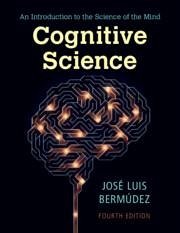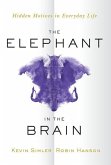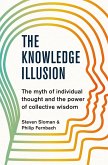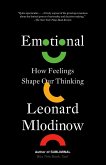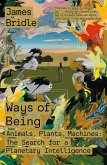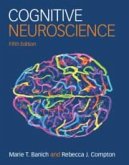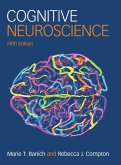Jose Luis Bermudez (Texas A & M University)
Cognitive Science
An Introduction to the Science of the Mind
Jose Luis Bermudez (Texas A & M University)
Cognitive Science
An Introduction to the Science of the Mind
- Broschiertes Buch
- Merkliste
- Auf die Merkliste
- Bewerten Bewerten
- Teilen
- Produkt teilen
- Produkterinnerung
- Produkterinnerung
This popular textbook has been significantly rewritten for the fourth edition to make it more accessible to students and easier for instructors to use. It presents a unified and up-to-date introduction to cognitive science as a field of inquiry in its own right, and includes a new chapter on emotions.
Andere Kunden interessierten sich auch für
![Elephant in the Brain Elephant in the Brain]() Kevin Simler (Writer and Writer Software Engineer and Software EngElephant in the Brain22,24 €
Kevin Simler (Writer and Writer Software Engineer and Software EngElephant in the Brain22,24 €![Good Vibrations Good Vibrations]() Stefan Koelsch (University of Bergen)Good Vibrations21,99 €
Stefan Koelsch (University of Bergen)Good Vibrations21,99 €![The Knowledge Illusion The Knowledge Illusion]() Steven SlomanThe Knowledge Illusion10,99 €
Steven SlomanThe Knowledge Illusion10,99 €![Emotional Emotional]() Leonard MlodinowEmotional9,49 €
Leonard MlodinowEmotional9,49 €![Ways of Being Ways of Being]() James BridleWays of Being15,99 €
James BridleWays of Being15,99 €![Cognitive Neuroscience Cognitive Neuroscience]() Marie T. Banich (University of Colorado Boulder)Cognitive Neuroscience56,99 €
Marie T. Banich (University of Colorado Boulder)Cognitive Neuroscience56,99 €![Cognitive Neuroscience Cognitive Neuroscience]() Marie T. Banich (University of Colorado Boulder)Cognitive Neuroscience164,99 €
Marie T. Banich (University of Colorado Boulder)Cognitive Neuroscience164,99 €-
-
-
This popular textbook has been significantly rewritten for the fourth edition to make it more accessible to students and easier for instructors to use. It presents a unified and up-to-date introduction to cognitive science as a field of inquiry in its own right, and includes a new chapter on emotions.
Produktdetails
- Produktdetails
- Verlag: Cambridge University Press
- 4 Revised edition
- Seitenzahl: 410
- Erscheinungstermin: 10. November 2022
- Englisch
- Abmessung: 214mm x 277mm x 21mm
- Gewicht: 1174g
- ISBN-13: 9781009073677
- ISBN-10: 1009073672
- Artikelnr.: 63766858
- Herstellerkennzeichnung
- Libri GmbH
- Europaallee 1
- 36244 Bad Hersfeld
- gpsr@libri.de
- Verlag: Cambridge University Press
- 4 Revised edition
- Seitenzahl: 410
- Erscheinungstermin: 10. November 2022
- Englisch
- Abmessung: 214mm x 277mm x 21mm
- Gewicht: 1174g
- ISBN-13: 9781009073677
- ISBN-10: 1009073672
- Artikelnr.: 63766858
- Herstellerkennzeichnung
- Libri GmbH
- Europaallee 1
- 36244 Bad Hersfeld
- gpsr@libri.de
José Luis Bermúdez's research interests are interdisciplinary in nature at the intersection of philosophy, psychology, and neuroscience. His many books include The Paradox of Self-Consciousness (MIT Press, 1998), which analyzes the nature of self-awareness; Thinking without Words (Oxford, 2003), which offers a model for thinking about the cognitive achievements and abilities of prelinguistic infants and nonlinguistic humans, and Decision Theory and Rationality (Oxford, 2009), which explores tensions in how the concept of rationality is defined and formalized in different academic disciplines. Recent books include Understanding "I": Language and Thought, published by Oxford University Press in 2017 and The Bodily Self: Selected Essays by MIT Press in 2018. His most recent book, The Power of Frames (Cambridge, 2020) was supported by an ACLS fellowship for 2018-2019 and an NEH Summer Stipend for 2018. A target article with peer commentary based on The Power of Frames appeared in Behavioral and Brain Sciences (2022).
Preface
Introduction: the challenge of cognitive science
Part I. Historical Landmarks: 1. The prehistory of cognitive science
2. The discipline matures: three milestones
3. The turn to the brain
Part II. Models and Tools: 4. Physical symbol systems and the language of thought
5. Neural networks and distributed information processing
6. Applying dynamical systems theory to model the mind
7. Bayesianism in cognitive science
8. Modules and architectures
9. Strategies for brain mapping
Part III. Applications: 10. Models of language learning
11. Object perception and folk physics
12. Machine learning: from expert systems to deep learning
13. Exploring mindreading
14. Robotics: from GOFAI to situated cognition and behavior-based robotics
15. The cognitive science of consciousness
16. The emotions: from cognitive science to affective science
17. Looking ahead: challenges and opportunities
Glossary
References
Index.
Introduction: the challenge of cognitive science
Part I. Historical Landmarks: 1. The prehistory of cognitive science
2. The discipline matures: three milestones
3. The turn to the brain
Part II. Models and Tools: 4. Physical symbol systems and the language of thought
5. Neural networks and distributed information processing
6. Applying dynamical systems theory to model the mind
7. Bayesianism in cognitive science
8. Modules and architectures
9. Strategies for brain mapping
Part III. Applications: 10. Models of language learning
11. Object perception and folk physics
12. Machine learning: from expert systems to deep learning
13. Exploring mindreading
14. Robotics: from GOFAI to situated cognition and behavior-based robotics
15. The cognitive science of consciousness
16. The emotions: from cognitive science to affective science
17. Looking ahead: challenges and opportunities
Glossary
References
Index.
Preface
Introduction: the challenge of cognitive science
Part I. Historical Landmarks: 1. The prehistory of cognitive science
2. The discipline matures: three milestones
3. The turn to the brain
Part II. Models and Tools: 4. Physical symbol systems and the language of thought
5. Neural networks and distributed information processing
6. Applying dynamical systems theory to model the mind
7. Bayesianism in cognitive science
8. Modules and architectures
9. Strategies for brain mapping
Part III. Applications: 10. Models of language learning
11. Object perception and folk physics
12. Machine learning: from expert systems to deep learning
13. Exploring mindreading
14. Robotics: from GOFAI to situated cognition and behavior-based robotics
15. The cognitive science of consciousness
16. The emotions: from cognitive science to affective science
17. Looking ahead: challenges and opportunities
Glossary
References
Index.
Introduction: the challenge of cognitive science
Part I. Historical Landmarks: 1. The prehistory of cognitive science
2. The discipline matures: three milestones
3. The turn to the brain
Part II. Models and Tools: 4. Physical symbol systems and the language of thought
5. Neural networks and distributed information processing
6. Applying dynamical systems theory to model the mind
7. Bayesianism in cognitive science
8. Modules and architectures
9. Strategies for brain mapping
Part III. Applications: 10. Models of language learning
11. Object perception and folk physics
12. Machine learning: from expert systems to deep learning
13. Exploring mindreading
14. Robotics: from GOFAI to situated cognition and behavior-based robotics
15. The cognitive science of consciousness
16. The emotions: from cognitive science to affective science
17. Looking ahead: challenges and opportunities
Glossary
References
Index.

